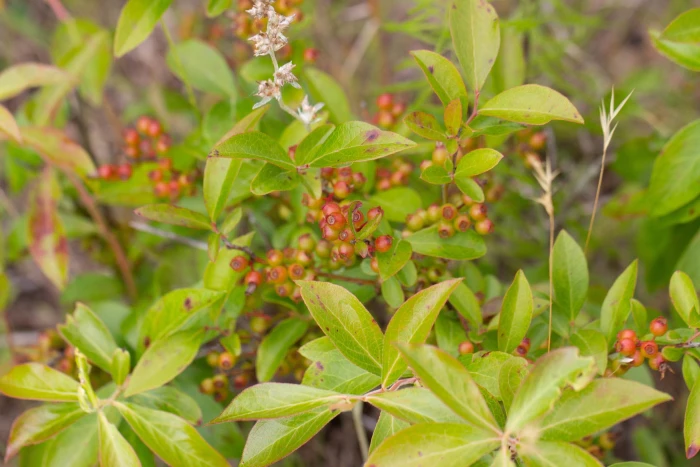Black Highbush Blueberry
(Vaccinium fuscatum)
Black Highbush Blueberry (Vaccinium fuscatum)
/
/

Jessica
CC BY 4.0





















































Estimated Native Range
Climate Requirements for Suzhou, China
| This Plant | Your Site | Plant Suitability for Your Location | ||
|---|---|---|---|---|
| • Precipitation | 31" - 67" | 38" | Aquatic | Aquatic |
| • High Temp. | 74°F - 94°F | 89°F | Your summer temperatures are normal for this plant. | Excellent |
| • Low Temp. | 4°F - 51°F | 33°F | Your winter temperatures are normal for this plant | Excellent |
Summary
Black Highbush Blueberry is valued for its edible fruit, which is high in antioxidants and can be used in culinary applications. It is also planted for wildlife habitat restoration and as an ornamental in naturalistic garden settings. This shrub thrives in acidic, moist, well-drained soils and benefits from mulching with pine needles or peat moss to maintain soil acidity. It requires consistent moisture and can tolerate partial shade, although fruit production is best in full sun. Gardeners should be aware of potential issues with fungal diseases, such as leaf spot and stem blight, and should provide good air circulation to minimize these problems.CC BY-SA 4.0
Plant Description
- Plant Type: Shrub
- Height: 3-11 feet
- Width: 1-3 feet
- Growth Rate: Moderate
- Flower Color: Green, Pink, White
- Flowering Season: Winter, Spring
- Leaf Retention: Deciduous
Growth Requirements
- Sun: Full Sun, Part Shade
- Water: Medium, High
- Drainage: Medium
Common Uses
Bee Garden, Bird Garden, Border Plant, Butterfly Garden, Edible*Disclaimer: Easyscape's listed plant edibility is for informational use. Always verify the safety and proper identification of any plant before consumption., Groundcover, Hummingbird Garden, Water Garden
Natural Habitat
Wetland margins, pine barrens, and open, acidic woodlands
Other Names
Common Names: Hairy Highbush Blueberry, Downy Swamp-Huckleberry
Scientific Names: Vaccinium fuscatum, Vaccinium atrococcum, Vaccinium arkansanum, Vaccinium corymbosum var. atrococcum, Vaccinium corymbosum var. fuscatum, Cyanococcus fuscatus, Vaccinium corymbosum var. atrocarpum, Cyanococcus atrococcus, Vaccinium atrococcum f. atrococcum
GBIF Accepted Name: Vaccinium fuscatum Aiton